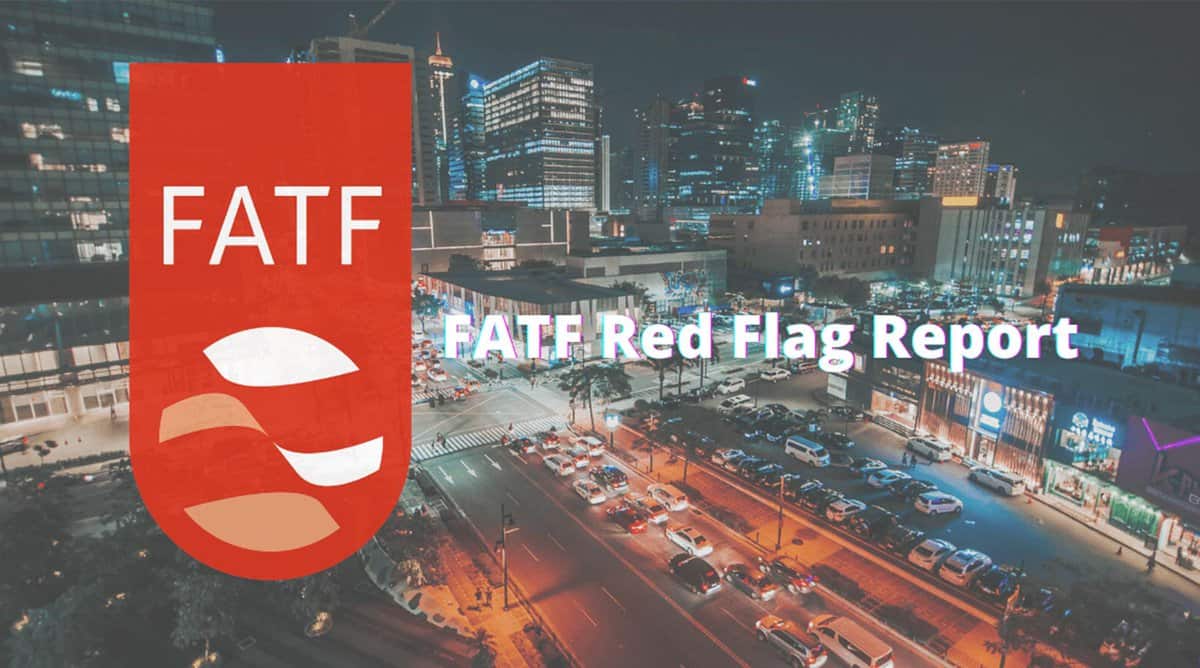The FATF Red Flags Report is Reactive Guidance to the Cryptocurrency Industry
The FATF document consists of six red flag indicators that may indicate suspicious activities or attempts to evade law enforcement.

September 30, 2020 – A newly released report from the Financial Action Task Force (FATF) has compiled a number of “red flag” indicators that virtual asset service providers (VASPs) should take note in identifying and reporting potential money laundering (ML) and terrorist financing activities.
The FATF Red Flag Indicators
The document consists of six red flag indicators, which are listed below, along with some instances that may indicate suspicious activities or attempts to evade law enforcement. Later in the article, I’ve asked Ms. Agnes Rea Kumar, Chief Compliance Officer of cryptocurrency exchange PDAX what the FATF red flag report could mean to local virtual asset service providers.
(Note: This article is third in our FATF series of articles. Check out our FATF introductory article as well as our piece on the Travel Rule.)
Transaction-related
- Making multiple high-value transactions in short succession
- Making multiple high-value transactions in a staggered regular pattern with no further transactions afterwards
- Transferring assets immediately to multiple other VASPs that is not related with where the customer lives or has weak AML/CFT controls
- Depositing virtual assets and then withdrawing them immediately despite high transaction fees
- Accepting funds from addresses associated with holding stolen funds
Transaction pattern-related
- Conducting large initial deposit despite the amount being inconsistent with the depositor’s financial profile
- Conducting large initial deposit and then withdrawing them all on the next day
- One or more persons using the same IP address
- Multiple incoming transactions in small amounts and then facilitating a one large conversion to fiat currency
- Facilitating exchange to fiat currency even at a potential high value loss
Anonymity-related*
- Immediate conversion of purchased or deposited Bitcoin to privacy coins
- Customers that operate as unregistered/unlicensed VASP
- Abnormal transaction activity
- Transactions making use of mixing services
Sender or Recipient-related
- Creating separate accounts under different names
- Transactions initiated from non-trusted IP addresses
- Incomplete KYC Information
- Customer declining request to be KYC’d
- Customer provided forged documents
- Customer has a criminal record known via publicly available information
- Customer does not appear to be knowledgeable yet proceed to do technically complicated trades (a possibility of account takeover)
- A customer older than the average age of a cryptocurrency user engaging in large transactions (suggesting elder financial exploitation)
- Customer suddenly purchasing large amount of virtual asset inconsistent with their wealth profile (suggesting money laundering or being forced to launder on another person’s behalf, or a scam victim)
Source of Funds or Wealth-related
- Transacting with addresses or bank cards associated with fraud, the darknet, etc
- Transacting from addresses associated with gambling services
Geographical Risks-related
- Customer transfers or receives virtual asset to or from an exchange located in a country that does not have have AML/CFT controls
- Customer transfers or receives virtual asset to or from an exchange that does not have tighter AML/CFT controls
Notes*
On the subject of anonymity, the FATF recognized that a customer’s effort to anonymize does not automatically suggest an illicit transaction. For example, the use of a hardware wallet or a paper wallet are legitimate ways to protect a person’s cryptocurrency holdings. The FATF commented that these indicators should be considered in the context of other characteristics, including the customer’s profile, wealth profile, or a logical business explanation.
The FATF said the report is drawn from extensive input of its members around the world and specific to VASPs. Useful to any entity engaged or dealing with cryptocurrencies, the standard-setting body said a risk-based approach implemented with regular dialogue between public and private sectors could enhance the report’s effectiveness.
A Reactive Guideline
According to the FATF, its Red Flag Indicators report is based on more than 100 case studies, contributed by jurisdictions between 2017 and 2020. They also said the report is specific to virtual assets and their associated financial activities but by no means exhaustive.
According to Ms. Agnes Rea Kumar, Chief Compliance Officer at Philippine Digital Asset Exchange (PDAX), the FATF Red Flag Report will make the task easier because transaction monitoring and reporting of cryptocurrencies has always been a gray area in most jurisdictions, an effect of not having clear guidelines on what is supposed to suspicious. “This report, if adopted by domestic laws will clear that gray area,” she said.
Ms. Kumar, however, noted that the guidelines, which listed how financial institutions can monitor and create appropriate suspicious transaction reports (STRs), are technically reactive in nature because illicit activity was done before a report can be made. “This report will help law enforcement track down bad actors, but it will not cut down the number of illicit activities,” she added.
Still, she thinks the FATF’s approach (making a red flag indicator report) is a good thing for the industry. “This means more people are using cryptocurrency that regulators need to ensure everyone’s protection,” Ms. Kumar concluded.
The Blockchain is Transparent for Everyone to See
Nathan Smale, Principal Consultant at Emfarsis examined the FATF Red Flag report and according to the people he interviewed in this article at Regulation Asia, the cryptocurrency industry actually wields the tools and is well equipped to respond to many of the red flags outlined by the international body.
The report came out at a critical time when the traditional financial world is rocked by a scandal as leaked files from the Financial Crimes Enforcement Network (FinCEN) illustrated how the system turned a blind eye on money laundering that has been happening right at their noses for years.
As Mr. Smale said in the Regulation Asia piece, the FATF guidance presents an opportunity for the cryptocurrency industry to demonstrate that it can combat illicit activity.
“Blockchain, known for its transparency and immutable record-keeping, may yet prove to be one of the most effective AML tools available today,” he said
This article is published on BitPinas: The FATF Red Flags Report is Reactive Guidance to the Cryptocurrency Industry
About BitPinas:
BitPinas is an independent blockchain, finance, and cryptocurrency news site covering the crypto and blockchain news and developments in the Philippines. We aim to be the website where you can find all information on blockchain and crypto in the Philippines. We are read by investors and enthusiasts alike, including crypto/blockchain company founders and government personnel. Contact support@bitpinas.com for more information, consulting advice, and partnerships. Follow us on Facebook and Twitter.
Contact and Subscribe to BitPinas:
- Join BitPinas on Telegram
- Follow on Facebook and Twitter for the latest news and updates
- Disclaimer: All articles on BitPinas must be treated as not an investment advice. Readers are encouraged to do their own research. This website is not responsible for any loss incurred by the reader, nor will it take credit for their gains.
- For news tips, partnership discussions, or press release submissions, please send to support@bitpinas.com

![[Event Recap] QU3ST Esports Spamandrice Wins Axie Infinity Manila Open 2022 3 [Event Recap] QU3ST Esports Spamandrice Wins Axie Infinity Manila Open 2022](https://bitpinas.com/wp-content/uploads/2022/11/axie-open-manila-20-768x402.png)



